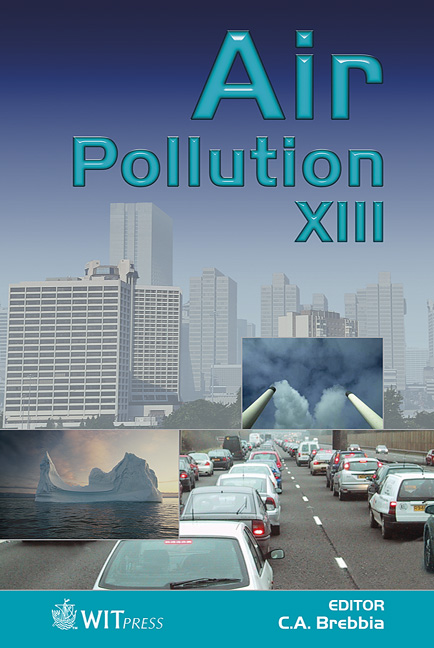Air Contamination In A Small Urban Area In Southern Poland
Price
Free (open access)
Transaction
Volume
82
Pages
10
Published
2005
Size
428 kb
Paper DOI
10.2495/AIR050271
Copyright
WIT Press
Author(s)
K. Sawicka-Kapusta, J. Gdula-Argasi ń ska, M. Zakrzewska, E. Bartyzel, W. Graca Dorociuk & M. Głuc
Abstract
Epiphytic lichen Hypogymnia physodes (L.) Nyl. as a bioindicator was used to estimate air pollution (heavy metals and sulphur dioxide) in Jas ł o, a small urban area in the southern part of Poland. Investigations were carried out from 1997 to 2003. Hypogymnia physodes from the control area (Borecka Forest) were transplanted to Jas ł o city during three summer seasons: 1997, 1998, 2003 and four winter seasons: 1997/1998, 1998/1999, 2000/2001, 2002/2003. After six months lichens were collected and the concentration of heavy metals (Cd, Pb, Cu, Zn, Fe) and S were determined. The highest sulphur accumulation was found in the winter season of 1997/1998. No significant statistical differences between sulphur accumulations in transplanted Hypogymnia physodes were found in the next three winter seasons which confirm the same sulphur dioxide pollution in the Jas ł o area. The highest cadmium, lead, copper, zinc and iron concentrations were found in lichens exposed in the summer of 1997. No significant statistical differences in heavy metal accumulations were found between the summers of 1998 and 2003. Transplanted Hypogymnia physodes showed the different local sources of emissions that existed in the investigated area which caused contamination in Jas ł o city. Keywords: Jas ł o city, urban air pollution, heavy metals, sulphur dioxide, Hypogymnia physodes, biomonitoring, transplantation. 1 Introduction For many years Poland used to be one of the most polluted country in the Eastern Europe – taking a higher place in sulphur dioxide emission and in the dust emission just after former Soviet Union and East Germany [1]. The situation has
Keywords
Jasło city, urban air pollution, heavy metals, sulphur dioxide, Hypogymnia physodes, biomonitoring, transplantation.





